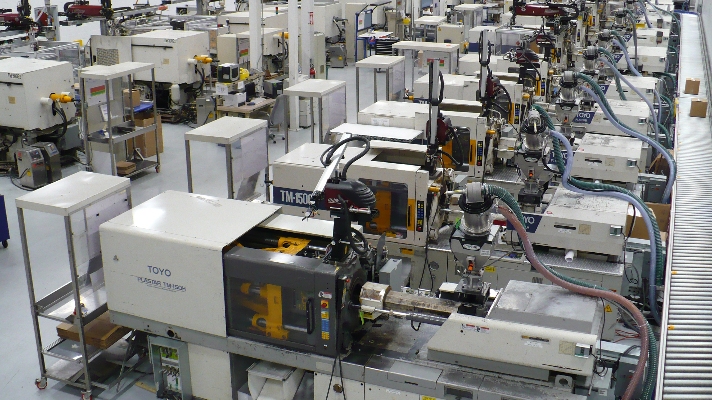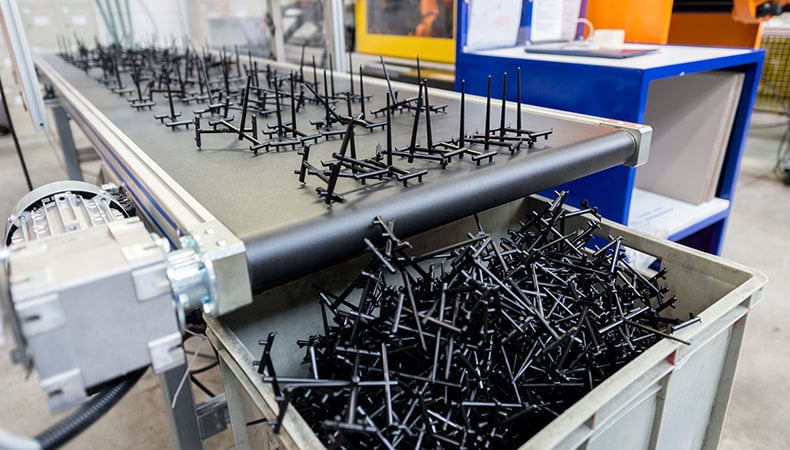Just How Plastic Injection Molding Drives Performance in Automation
Just How Plastic Injection Molding Drives Performance in Automation
Blog Article
Understanding the Basics of Plastic Injection Molding Procedures
Plastic shot molding serves as a cornerstone of contemporary manufacturing, giving a methodical strategy to creating intricate parts with accuracy. This procedure not just includes the essential steps of melting and injecting products right into molds but likewise includes a nuanced understanding of different affecting aspects, such as temperature level and pressure. As sectors increasingly require performance and top quality, the intricacies of this methodology come to be a lot more critical. Exploring these important elements might reveal how even small changes can bring about substantial renovations in production results, increasing questions about the potential for development in this well established process.
What Is Plastic Shot Molding?
Plastic injection molding is an extensively made use of manufacturing procedure that transforms thermosetting and thermoplastic products right into exact and complex forms. This method is preferred for its capacity to generate high volumes of the same parts with exceptional precision, making it a crucial method in numerous industries, consisting of automotive, durable goods, and clinical tools.
The process entails melting the selected plastic material and infusing it right into a mold under high stress. The mold, created to the requirements of the wanted part, allows the molten plastic to form as it solidifies and cools. Once the product has actually hardened, the mold is opened up, and the completed element is expelled.
Plastic shot molding provides numerous benefits, consisting of lowered waste, uniformity in manufacturing, and the capacity to include intricate layouts that may be challenging with other manufacturing approaches. Additionally, it sustains a wide series of materials, each offering distinct properties that can be tailored for specific applications. As industries continue to introduce, plastic shot molding continues to be at the center, making it possible for the growth of advanced products that meet developing customer demands.
The Shot Molding Process
The injection molding procedure is an innovative strategy that entails a number of crucial stages to produce top notch plastic parts. Originally, plastic pellets are fed right into a heated barrel where they are merged a viscous liquid. This molten plastic is then infused under high pressure into a precision-engineered mold, which forms the product right into the preferred type.
Once the mold and mildew is loaded, the plastic is permitted to strengthen and cool, taking the form of the mold cavity. Cooling time is essential, as it affects the cycle time and the last buildings of the molded part. After enough cooling, the mold and mildew opens, and the ended up element is expelled utilizing ejector pins.

Products Utilized in Shot Molding
Numerous products can be made use of in the shot molding procedure, each offering one-of-a-kind buildings that provide to certain applications. The most commonly used products include thermoplastics, thermosetting plastics, and elastomers.

Thermosetting plastics, like epoxy and phenolic resins, go through a chemical modification throughout the curing process, resulting in a rigid, inflexible framework. These products are optimal for applications needing high heat resistance and structural stability, typically used in electrical insulators and vehicle components.
Elastomers, including silicone and rubber-based materials, supply flexibility and durability. Their one-of-a-kind residential or commercial properties make them suitable for applications that require flexibility, such as gaskets and seals.
Additionally, specialty products like bio-based plastics and compounds are obtaining traction for their environmental advantages and boosted performance qualities, widening the range of shot molding applications in numerous sectors. Recognizing the residential properties of these products is crucial for selecting the appropriate kind for specific projects.
Advantages of Injection Molding
Shot molding stands out as a highly reliable production process that offers numerous advantages for producing intricate get rid of accuracy. One of one of the most significant advantages is the capacity to produce complex layouts that would certainly be impossible or difficult to accomplish with other approaches (Plastic Injection Molding). The procedure enables comprehensive features and limited resistances, guaranteeing premium elements
Additionally, shot molding is understood for its fast production capabilities, making it a suitable option for high-volume production. Once the mold and mildew is produced, parts can be created swiftly, decreasing preparations and boosting general performance. This effectiveness not only reduces production prices however also supplies a competitive edge out there.
The flexibility of products used in shot molding even more improves its appeal. A variety of thermoplastics and thermosetting polymers can be employed, enabling suppliers to select products that best satisfy their details needs, including toughness, flexibility, and warmth resistance.
Moreover, the procedure minimizes waste, as excess product can often be recycled and recycled. This sustainability element adds to a decreased environmental effect, making shot molding a responsible manufacturing selection. On the whole, the benefits of injection molding make it a preferred method for numerous markets.
Variables Impacting Product High Quality
While various factors can influence item top quality in shot molding, recognizing these components is crucial for attaining optimal results. official source Key facets include product selection, processing specifications, and mold and mildew design.
Material choice plays a vital function, as various polymers exhibit special properties that affect flowability, strength, and thermal stability. Insufficient material selection can bring about flaws such as bending or incomplete filling.
Processing read this criteria, including cycle, pressure, and temperature time, must be carefully controlled. Variations in these setups can cause inconsistencies partially measurements and surface finish. For circumstances, excessively heats might trigger deterioration of the polymer, while insufficient pressure can lead to short shots.
Mold and mildew layout is equally vital, as it establishes the circulation of the molten plastic and the cooling process. Inadequately created mold and mildews might lead to unequal cooling rates, leading to residual stress and anxieties and dimensional mistakes.

Conclusion
Finally, plastic injection molding functions as an essential manufacturing procedure that enables the effective production of top quality elements. Mastery of the shot molding process, including the understanding of products and the impact of various variables on item quality, is crucial for navigate to this website attaining optimum results. The advantages of this approach, such as cost-effectiveness and layout adaptability, more highlight its relevance throughout numerous markets, solidifying its status as a favored choice for high-volume manufacturing.
Plastic injection molding serves as a cornerstone of contemporary manufacturing, providing a methodical method to producing complex parts with accuracy.Plastic shot molding uses several benefits, including reduced waste, consistency in manufacturing, and the ability to include detailed styles that may be challenging with other manufacturing approaches (Plastic Injection Molding). As industries continue to innovate, plastic injection molding continues to be at the center, allowing the advancement of sophisticated items that satisfy progressing consumer needs
The shot molding procedure is an innovative method that entails numerous essential stages to generate high-grade plastic parts.In conclusion, plastic injection molding offers as a crucial manufacturing process that enables the reliable production of top notch parts.
Report this page